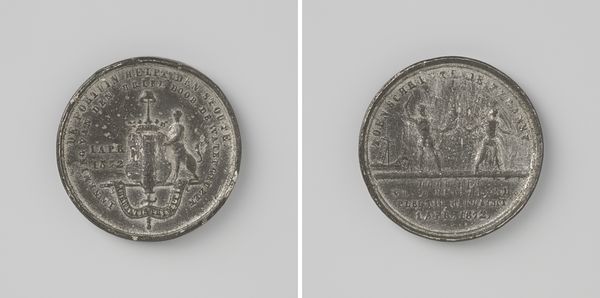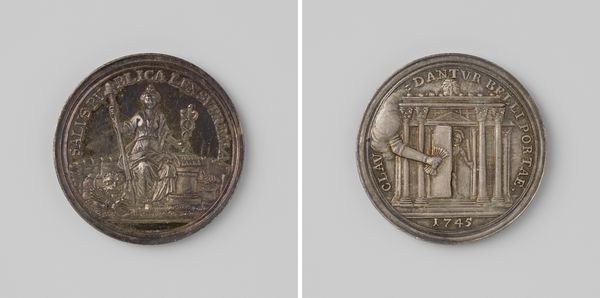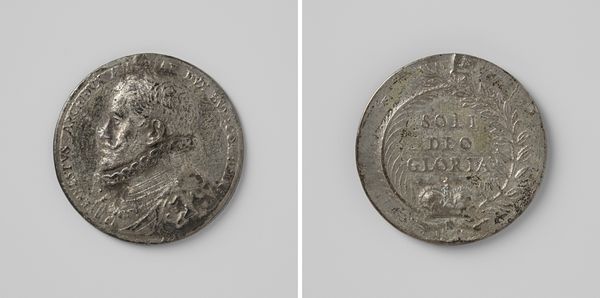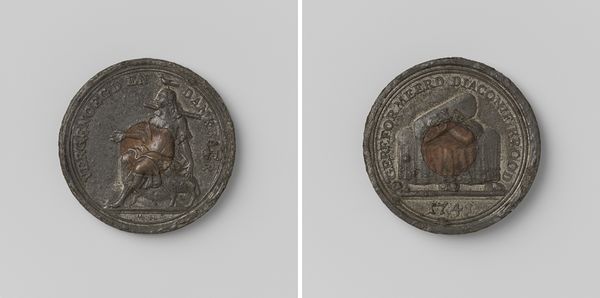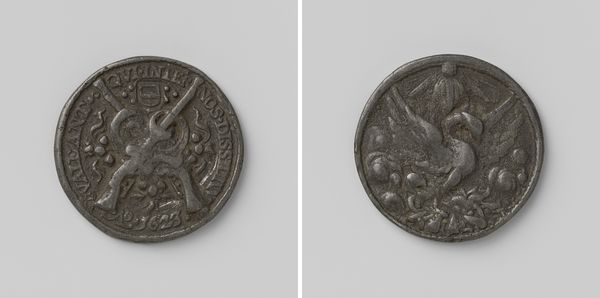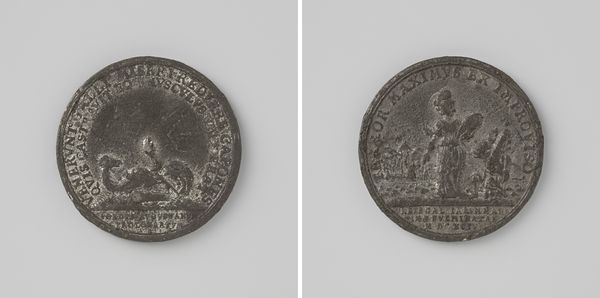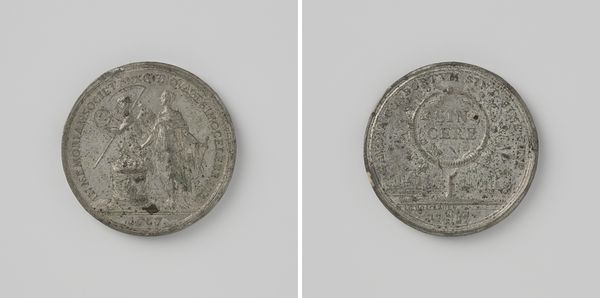
Gereformeerde Diakonie te Amsterdam, loodje dat behoeftige kerklidmaten bij uitdeling recht gaf op brood 1777
0:00
0:00
print, metal, relief, engraving
#
neoclacissism
# print
#
metal
#
relief
#
geometric
#
history-painting
#
engraving
Dimensions: diameter 3 cm, weight 13.78 gr
Copyright: Rijks Museum: Open Domain
Editor: So, this is "Gereformeerde Diakonie te Amsterdam, loodje dat behoeftige kerklidmaten bij uitdeling recht gaf op brood" - or "Reformed Diaconate in Amsterdam, a token that entitled needy church members to bread upon distribution." It's from 1777 and by the Monogrammist CM. It's a metal print - specifically an engraving, I think. What jumps out to me is that it’s something functional, something used in a material way to distribute resources, rather than purely aesthetic. What do you see here? Curator: What intrigues me is this object's dual life. It operates on a practical level – as you pointed out, it’s a token representing the right to bread – yet it’s made using techniques associated with fine art printmaking, like engraving. It bridges the gap between something functional and something… elevated. Who was Monogrammist CM? What was their workshop like? Did they make a lot of functional things like this, or was this an unusual commission? Editor: That's interesting! I hadn't considered that tension between craft and art in this context. Was it common to create something like a token using such a technique? It makes me think about labor; was the artistic skill valued even for such mundane purposes, and what did the process entail? Curator: Exactly. Considering the Neoclassical style suggests that this token sought to imbue the act of charity with authority and tradition. The act of issuing bread in this formal way likely involved other labor considerations as well: administration, distribution, not to mention production of the food itself! How does the use of metal influence the perception of worth, of the weight of that promise of bread? Editor: The metal aspect gives it a sense of permanence. Not easily destroyed. I’m now wondering how the recipients felt about this token. Was it a mark of shame, a symbol of hope, or just a way to get a meal? I guess all of these things, depending on the individual and their circumstances? Curator: Precisely. It’s a complex relationship between object, maker, distributor, and receiver – and each perspective illuminates the materiality of need and provision. Editor: Thinking about the interplay between form, function and the realities of labor opens up new perspectives! It makes this seemingly simple token so much richer.
Comments
No comments
Be the first to comment and join the conversation on the ultimate creative platform.


